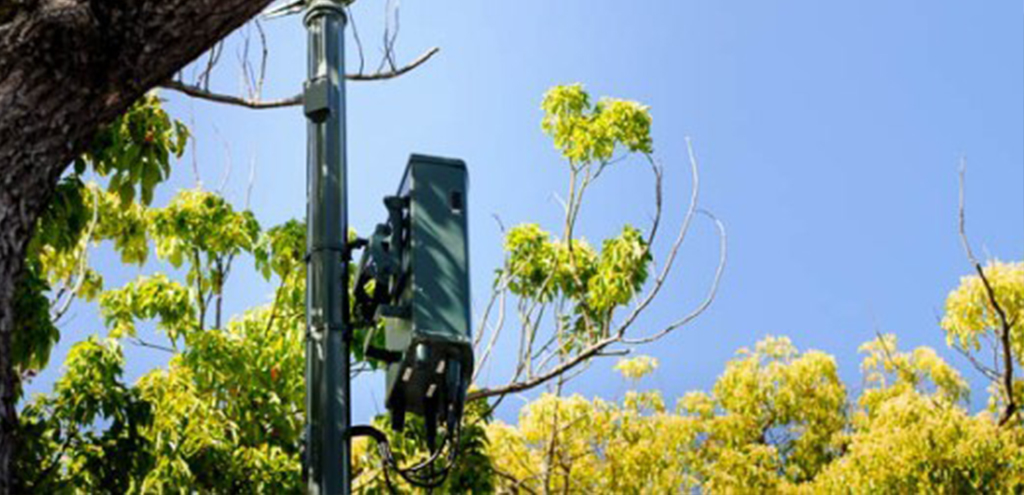THE LEAFLET

Small Cells and 5G are coming to D.C. Help us make sure trees survive this.
We need you to tell DDOT to include protections for current and future trees in their plan for small cells. Submit your comments to help shape guidelines to include protections for current trees potentially affected by small cell deployment, and future trees as well.
Why are they being installed and why do I care about this?
- Small Cells are being installed in order to increase data network capacity.
- Currently, telecom providers are planning to install 5G technology. These 5G waves are short and fast, requiring antennas to be close together. This means that they need to be close to the ground. However, these 5G waves are interrupted by things as small as tree leaves, so if these small cells are going to be successful, obstructions like these will need to be cleared out. We need to make sure that our trees, both current and future, are being protected
Hmm wait remind me what a small cell is?
- Small Cell is a term to describe the antennae and equipment telecom providers (like Sprint or Verizon) plan to install in public spaces in order to meet the growing demand for data that devices like cell phones and tablets require. They are called “small cell” because they are small cell towers. This new infrastructure could have long-lasting impacts on our city’s street trees and trees located on adjacent private lots.
Gotcha. Will Small Cells be installed all over D.C.?
- Most small cells will be installed in Wards 1, 2, and 6. However, there will also be small cells installed along most major roads and mostly concentrated in the downtown areas. Currently, 17,120 small cells are slated to be constructed (Map 2 on page 11 of DDOT’s Small Cell Design Guidelines)
- This is a problem because the densest places are those with the largest urban heat island effect and if we decrease the number of trees, we are perpetuating this issue.
OK, but where exactly will they be installed?
- To ensure they do their job and provide enhanced data coverage they’ll be installed in the ‘public amenity zone.’ This is public space that is between the curb and the sidewalk. Typically, this is where street lights, parking meters, bike racks, and street trees are.
- A few positive things: We are glad they are not allowing standalone poles for small cells to be located within at least 15 feet of a tree, a tree cannot be removed for the purpose of installing small cell infrastructure, and trees can’t be pruned for the benefit of small cell infrastructure.
However, we still have major concerns.
- Although there are protections for current trees, there is no language in the guidelines for making sure future trees also are supported. The trees that are currently being protected will die. When this happens, there is no guarantee that they will be replaced. If they aren’t and instead small cell infrastructure is installed, we may slowly lose our public tree canopy.
I want to help!
- Thank you! Submit comments by clicking here. Please submit your comments by 5pm March 15. You do not need to be a Certified Tree Advocate or have any advocacy experience. We just need you to care about the future of our city’s trees!
I submitted comments but I am still fired up and want to do more.
- We got you. Come out to testify at the meeting on March 21!
If you have additional questions about Small Cells or DDOT’s guidelines or anything else for that matter, we’re always here at friends@caseytrees.org